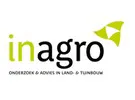A comprehensive report of Inagro's trials of alternative binding materials from the 2022 growing season has been published. One of the conclusions is that metal rings instead of clips can eventually reduce labor for binding. Together with an easier-to-handle plant flow (if combined with biodegradable ropes), ringing plants can make cultivation more sustainable.
Why and for what alternative binding materials?
Most growers use polypropylene (PP) ropes for this purpose because they are very flexible, have considerable tensile strength, and show little stretch or shrinkage. Moreover, PP availability is high which reduces the cost of reels. PP clips are often used to guide the plant along the rope and attach it to the rope. However, PP is not biodegradable. This severely limits the processing possibilities of a plant-rope-clip mixture.
It is challenging to separate the plastic materials from the plant residues and the waste stream of rope and clip fragments can only be incinerated. Technological innovations that allow the ropes to be processed along with the plant residues or that produce a clean plant stream offer opportunities to make cultivation more sustainable.

Why and for what alternative substrates?
For fruit crops in substrate crops, plants are traditionally placed on a growing medium in which all nutrients are dripped in the form of a nutrient solution. This medium is preferably inert (EC and pH control are smooth and predictable), pathogen-free, easy to place and clear, high quality (preservation of structure and optimal balance between water and air, etc.), and must be usable for a full year.
For tomato and sweet pepper, a lot of use of rockwool is still seen; cucumber is mainly grown on perlite. Both are inert, mineral substrates with a high energy demand during the production phase. To reduce the ecological impact of substrates, renewable raw materials that can be more easily given a second life after use could be looked at.
Some conclusions from the report
Biodegradable binding materials, which are similar in appearance and properties to standard PP materials, offer potential because it does not require any other operation from the user and therefore do not affect labor needs. To know whether the switch is profitable, the grower should weigh the higher costs against the savings in disposal costs. GMO support can also be included in the calculation. This may vary from supplier/buyer/region.
Metal rings instead of clips require an initial adjustment to cultivation operations, but can eventually reduce labor for tying up. Together with an easier-to-handle plant flow (if combined with biodegradable ropes), ringing plants can make cultivation more sustainable.
The Qlipr system requires a thorough redesign of the labor profile on a farm. Moreover, workers are asked to combine several operations in one passage. Nevertheless, the ropeless system can produce a clean residual flow and the investment cost is roundable thanks to a lower marketing cost and potential labor savings (after the learning curve).
The market offers organic substrates capable of growing a crop with yields and quality that can match the references rockwool or perlite. Each type of slab has its specific physical properties that must be taken into account in the irrigation strategy. For dry-type slabs, it is important to adjust irrigation frequency and turn size so that the dynamics in moisture content in the slab do not become too extreme and the plant does not experience drought stress. Moisture sensors can give an indication when first experienced and indicate if/when/how much adjustment is needed.
View the full research report here.
For more information:
Inagro
Ieperseweg87
8800 Rumbeke-Beitem, Belgium
Tel: 051 27 32 00
[email protected]
www.inagro.be
